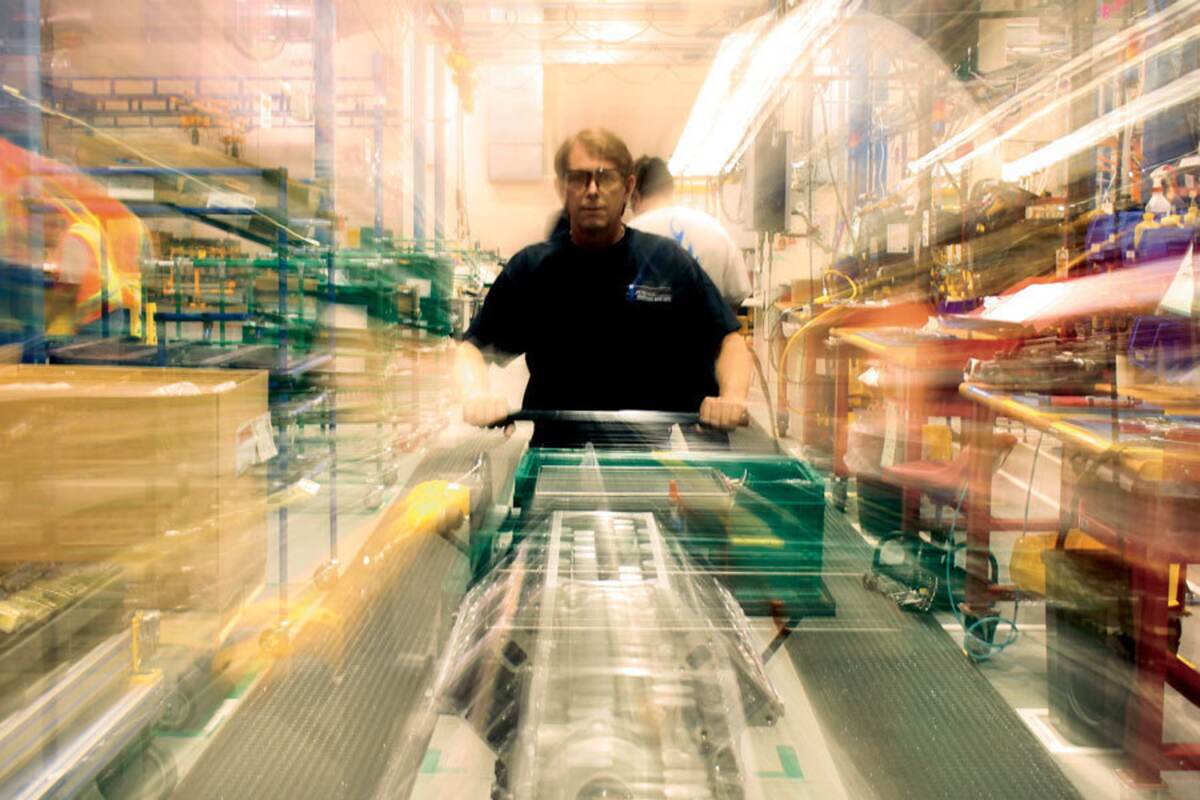As is usually the case with such things, the unique manufacturing facility for the Chevrolet Corvette Z06 (LS7) and ZR1 (LS9) engines is about as nondescript as it gets. Located in the faceless Detroit suburb of Wixom, Michigan, GM’s Performance Build Center is tucked away at the end of a winding road, at the back of a totally anonymous industrial park—in the shadow of an enormous and defunct Ford plant that built Lincolns, Thunderbirds and more.
There is no sign directing visitors to the building, let alone the banners and searchlights an enthusiast would expect for the location where ultra-high-horsepower engines are born. You have to know where it is, and even then it’s easy to make a wrong turn in the labyrinth of cookie-cutter industrial buildings within the park.
But once you’re inside its brightly lit and antiseptically clean environs, the Performance Build Center (PBC) makes a different impression, one that’s unique. With most employees laboring by hand, it has the personable intimacy of a race shop, yet it also has the computer-tracked quality assurance systems found in mainstream assembly facilities. The combination of old-world techniques and 21st-century technology makes for a real dichotomy.

Although the PBC is technically a manufacturing center like others in GM’s network, it differs in a fundamental way: Rather than a conventional assembly-line process, each engine is assembled by hand by a single technician. That means from the moment the crankshaft is laid in the block until the last intake manifold bolt is tightened, one person is responsible for it all—and he signs off on every LS7 or LS9 engine he builds.
“The LS7 and LS9 engines are premium products that demand a premium manufacturing technique,” said Tom Stephens, GM Vice President for Global Powertrain and quality. “The processes at the Performance Build Center bring a higher level of quality, because each builder is personally involved in all aspects of the assembly, helping ensure the Corvette Z06 and ZR1 deliver their world-class performance with exceptional durability and reliability.”
The PBC also is responsible for assembling the LS3 engines used in Grand Sport coupe models equipped with manual transmissions. These 6.2-liter V8s feature a dry-sump oiling system like those found in the LS7 and LS9, which is why it makes sense for them to be built in Wixom.

Just in case you’re wondering, the engine used in the Cadillac CTS-V—the LS9-based LSA—is not built at the PBC, but rather at a facility in Mexico. Previously, the supercharged version of the Cadillac Northstar V8 was assembled here. With that engine’s demise, the PBC became an all-Corvette shop.
We recently visited the PBC to view the creation of an LS9. It began with builder Rick Dadd selecting an engine block and the necessary rotating components from the “grocery store”—a room filled with mouth-watering stacks of titanium connecting rods, forged steel crankshafts and lightweight pistons. The block was mounted to a movable stand on which the entire engine would be built, then Dadd moved it to the first of approximately 15 stations that form a U-shaped assembly area. Each station contains the specialized tools required to perform specific procedures.

As Dadd completed a task at one station and moved on to the next, another builder moved into the previous station. It was a methodical process that could be instantly halted if a component or assembly issue arose.
Every PBC builder signs off on the engines he creates, and paperwork permanently records who assembled it. After all the quality checks are made, each engine is moved to a cold test area, for myriad inspections, including checking oil pressure and other critical systems. At another station, the engine is run briefly on compressed natural gas for balancing. After these procedures are completed and a final visual inspection is made, the engine is shipped to the Bowling Green Assembly Plant in Kentucky.
We were interested to find out the degree to which the engines are hand-built. It’s true that many of the components are delivered as bolt-on assemblies, such as the cylinder heads, so the builder doesn’t install the valves and valve springs. But other aspects are absolutely what you think of when it comes to building an engine by hand, including placing the bearings on the rods and carefully inserting the camshaft. And each rod/piston assembly is installed by hand.

Compared to the literally thousands of engines that are produced in a day at a conventional engine-assembly plant, the PBC produces only about 125—per week. It has capacity for many more, should other engines be added to the facility or, for some reason, the ZR1 becomes a volume seller.
The facility where the LS7 and LS9 engines originate is unique not only within GM, but the industry. It is rare to mix hand-built craftsmanship with computer-driven technology, and that it works so well here is a testament to the engineers and builders who make it happen. Seems to us those banners and searchlights would be entirely warranted.







